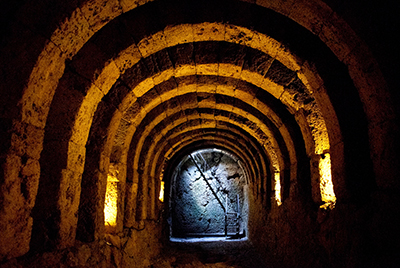It is always funny what sticks in your head from days past. Maybe because it sounded cool, I can still recall reading in school about “The Oracle of Delphi.” I won’t bore you with all the details, but I want to briefly explain.
The Oracle of Delphi was a priestess in a temple in Ancient Greece (Delphi, appropriately). Scholars debate the time but agree that it was several hundred years BCE. People would go to this oracle, where the female visionary would be sitting in a temple breathing “vapors” that would cause her to have visions. She would then make wise, authoritative proclamations that the visitors would accept as 100 percent correct. “The oracle said it, so it must be true” was no doubt a common phrase used in family arguments back in the day.
That part I remember from school. But if you go down the Google rabbit hole and read a bit, you’ll find that the “vapors” likely came from fissures in the earth. When scholars investigated, they discovered “…deep beneath the Delphi region lies a bituminous deposit, rich in hydrocarbons and full of pitch….” So evidently the oracle was breathing asphalt fumes to have her visions to guide the ancient Greek people. Go figure.
One of the problems we have when training new asphalt technicians is trying to keep them from treating sophisticated equipment, like the Dynamic Shear Rheometer (DSR), as if it is an oracle, infallible as it spits out the authoritative data report. To new technicians the DSR is often The Oracle of Delta…and G*.
The reality is that the DSR, as amazing and versatile as it is, is just a tool that needs to be calibrated and maintained regularly so that it provides valid results. And those results it produces still must be viewed with a discerning eye to gauge if the data makes sense. “The DSR said it so it must be true” is unfortunately an all-too-common belief among asphalt technologists today.
So, what can you do to ensure that you and your fellow asphalt scientists get good results from the DSR? Let the vision of the seven pillars guide you…
Pillar 1: Temperature It is such a cliché in the real estate business when they say that the three most important factors in selling a house are location, location and location. But they say that because it is so often true. The same analogy can be used for the DSR as the three most important factors in getting valid DSR results are often temperature, temperature and temperature. Temperature has to be verified. Frequently. The process of looking at results that are suspect should always start with temperature.
Pillar 2: Torque transducer Not as critical as temperature but it is an important equipment check. Verification of the torque transducer should also be considered when you start seeing your results drift from what you expect.
Pillar 3: Measurement geometry In the PG system we depend on parallel plate geometry. Plates that are worn, are non-concentric or wobble are sure to lead the DSR in misguiding you.
Pillar 4: Regular maintenance If you spend the right time and money maintaining something – whether it is a DSR, a road, a car or your body – it will last a long time and stay in good working order. Sure, it can be expensive. Do it because it’s important.
Pillar 5: Proper knowledge and technique Technician knowledge and technique can be enhanced through continuing professional development. Read the testing standards thoroughly at least once a year and refer to them frequently in the lab. If you are responsible for training a new technician, get the standard out first. More than once I’ve been shocked to hear of a new technician that was trained how to perform a test without ever seeing the standard. That will almost always create and perpetuate bad habits.
Pillar 6: Quality lab, quality results Skillful technicians are only part of the equation in establishing a quality lab. You need the other parts of the equation – (1) a quality management system (QMS) that tracks your calibrations, maintenance and training; and (2) consistent participation in proficiency sample programs and other interlaboratory studies to check your results against others.
Pillar 7: Don’t check your brain at the lab door Are you seeing MSCR Recovery greater than 100 percent or maybe negative recovery? What about G* and delta not behaving as expected with temperature? You know that’s probably not right. Don’t just take the result and move on blindly.
Your DSR is your partner, helping in your understanding of asphalt rheology. If you believe it is telling you how to think – then clearly, you’ve been breathing too many vapors.
Mike Anderson is the Director of Research and Laboratory Services at the Asphalt Institute.















